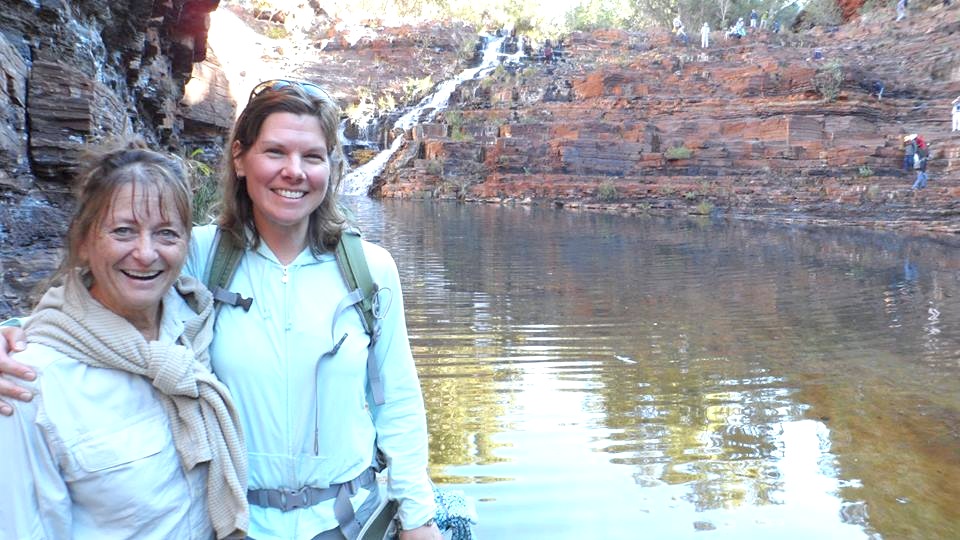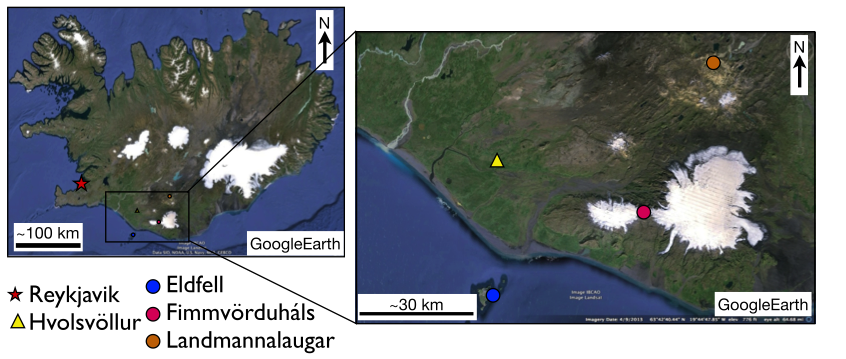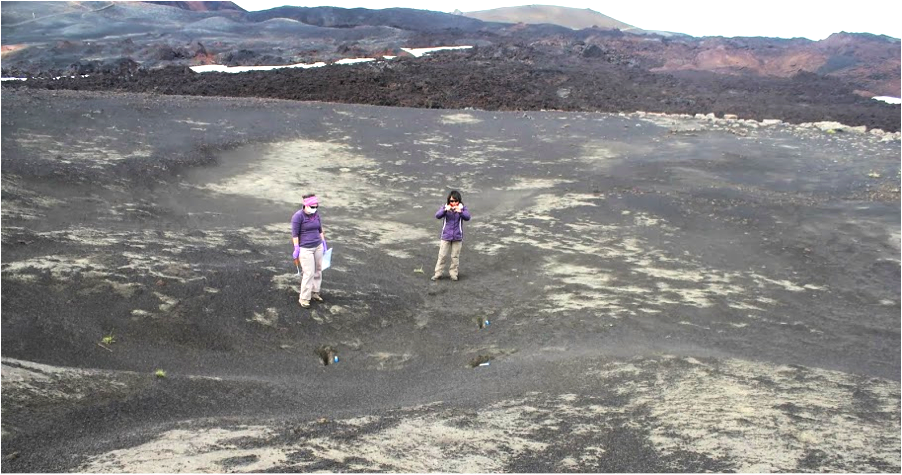 |
|
|
Fall 2013 Where in the World Are Our Astrobiologists? In addition to our Annual Astrobiology Workshop, the UWAB Program encourages, supports, and in many cases organizes educational experiences for astrobiology students in our program and around the world. This year, our students won external funding to study astrobiology in Spain, Australia and Iceland. The International Summer School in Astrobiology is an annual event that is jointly supported by the U.S. (through the NASA Astrobiology Institute), European, Canadian, and Brazilian governments. The school is held each year in the seaside village of Santander, in northern Spain, at the summer campus of the Universidad Internacional Menéndez Pelayo (UIMP). The curriculum includes lectures from international experts, group discussions, student projects, and an excursion to a nearby site of astrobiological interest. This year, the school was co-directed by Dr. Javier Gómez-Elvira, the Director of the Centro de Astrobiología in Spain, and our UWAB Director, Prof. Victoria Meadows. Over 30 students attended, including two from the UWAB program. This year's science theme was Biosignatures: The Fingerprints of Life. Attendees learned about biological metabolism, as well as the nature of a variety of biosignatures detectable in both planetary surfaces and atmospheres. Those who attended this year spoke highly of the experience, Jonathan Bapst, a graduate student in the Earth & Space Sciences department, said: “Santander is a gorgeous beach town, and as an aspiring astrobiologist, the summer school was an enlightening experience. I learned about the challenges that need to be overcome in order to detect the signatures produced by life on another planet— and in short, there are many. Disregarding false positives will be a major hurdle in the search for life outside of Earth. However, the lecturers who took part in the summer school are cognizant of these challenges. Their messages conveyed the necessary approaches for the future detection of past or present extraterrestrial life. I consider myself fortunate to have been part of this awesome summer program.” 
Eddie Schwieterman, a UWAB Astronomy graduate student, had similar sentiments: “The greatest advantage to the school in my mind was the ability to meet and discuss science with my peers from around the world and in many disciplines. Interdisciplinary work is the lifeblood of astrobiology; so forging cross-discipline relationships is crucial to advancing the field. The lectures by renowned astrobiologists served as the catalyst for further discussion in smaller groups about the most compelling questions astrobiology is attempting to answer. By bringing together the worlds next generation of astrobiologists, seeds for future collaboration and groundbreaking work were sown.” This past June, UWAB graduate student Eva Stueeken (Earth & Space Sciences) and UWAB/VPL collaborators Janet Siefert (Rice University) and Monika Kress (San Jose State University) participated in the Astrobiology Grand Tour in Western Australia. The 11-day excursion involved visits to locations significant to the study of early life on Earth— including the extant stromatolites of Shark Bay, the banded iron formations and iron ore mines of the Hamersley Basin, the supposedly cyanobacterial stromatolites of the 2.7 billion-year-old Fortescue Group, and the 3.35-3.49 billion-year-old Pilbara Craton, which contains what is arguably the oldest convincing fossil evidence of life on Earth. The tour was led by Professor Malcolm Walter of the University of New South Wales, the founding director of the Australian Centre for Astrobiology (ACA). Student support for Eva was provided by the NASA Astrobiology Institute.  One of the stops on tour was Karijini National Park (shown above). In this photo, Janet and Monika stand at the bottom of Dales Gorge, which cuts through the 2.49 billion year old Brockman Iron Formation. Here, the multidisciplinary group considered the various theories for atmospheric conditions that could have produced the rock. Still one of the greatest geologic puzzles earth scientists seek to explain, the natural beauty of the banded gorge needs no explanation to be appreciated by scientists and non-scientists alike. By Eddie Schwieterman & Elena Amador UW Astrobiology graduate students Elena Amador (ESS) and Eddie Schwieterman (Astronomy) joined an international team of astrobiologists investigating in situ life detection and characterization techniques in Mars analog environments of Iceland this summer. The expedition group conducted the field campaign as a simulated planetary exploration mission, establishing a field lab that evaluated samples concurrently with sample collection at select sites in southern Iceland.  Three analytic techniques including ATP bioluminescence, fluorescence microscopy and qPCR allowed the team to quantify the differences in microbial productivity (e.g. number of cells) and diversity over varying spatial scales in Icelandic lava fields. These environments contain biologically extreme conditions such as desiccation, low nutrient availability, and high temperatures (e.g. around fumaroles) of interest to astrobiologists. The primary sampling locations included the relatively new Fimmvörðuháls lava field (2010) and the Heimaey lava field on the Westman Islands (dating to 1973). 
The team was an international collaboration consisting mostly of graduate students from a variety of backgrounds and disciplines. This project began as a series of field exercises at the 2012 NASA Nordic Summer School “Water, Ice, and the Origin of Life”. During the summer school, students formulated scientific questions and designed sampling strategies for ATP bioluminescence assay measurements of volcanic rocks, weathered rhyolite and glacier ice. 
Elena and Eddie both received support from the Lewis & Clark Fund for Exploration and Field Research in Astrobiology administered by the American Philosophical Society (APS) and funded in part by the NASA Astrobiology Institute (NAI). Photos: (From Top to Bottom)
1) Santander, Spain: The location for the 2013 International Summer School in Astrobiology.
|
|
